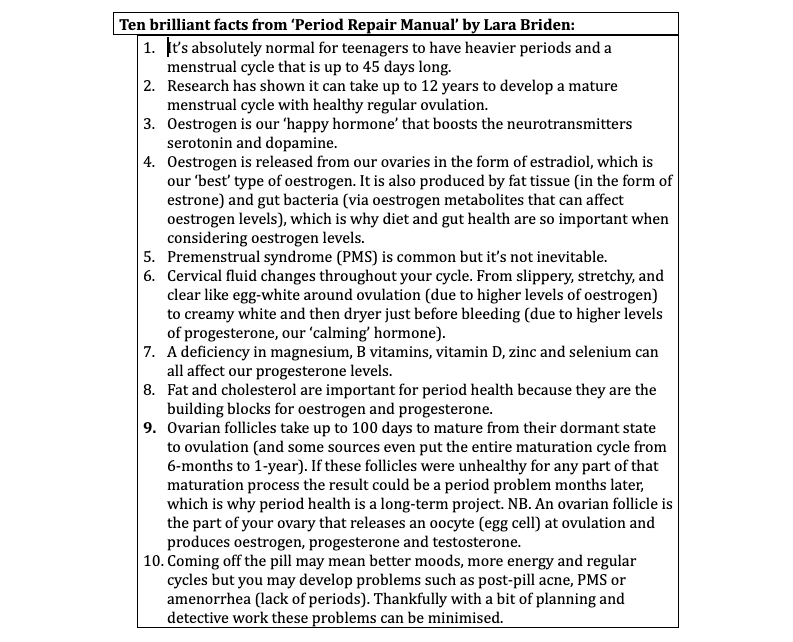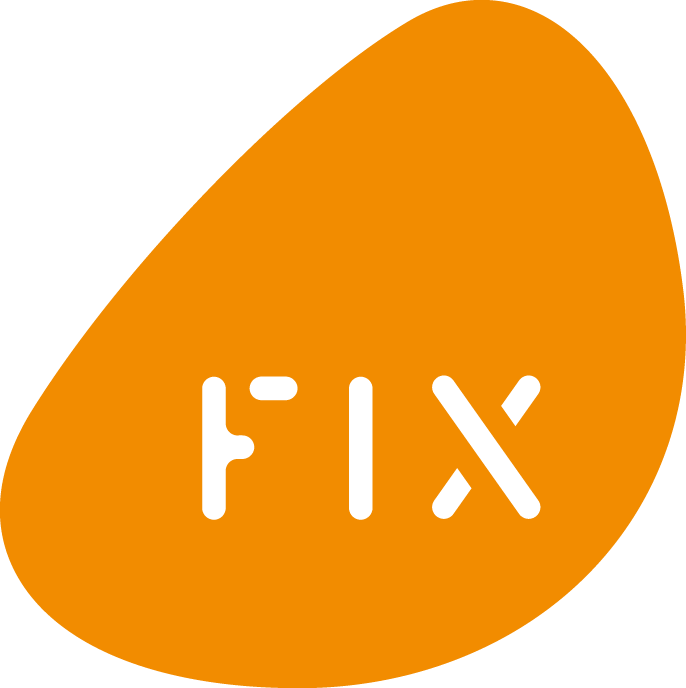FIX OSTEOPATH, CLIO TURTON SHARES INSIGHTS FROM TWO BRILLIANT BOOKS TO GET YOU STARTED ON YOUR JOURNEY TO OPTIMAL PERIOD HEALTH.
When I first started tracking my menstrual cycle about seven years ago I was just happy knowing what day of my cycle I was on, when I was ovulating, and when I was likely to have my period. I was amazed that I had managed to get as far as my early thirties without paying it much attention. As I became more curious I started writing down some of the things I noticed in my weekly diary, and as I built up these monthly observations, patterns started to emerge. The more attention I gave my cycle the more obvious these patterns became and I quickly became like my own personal detective.

I have found that being in touch with my cycle, and how it affects me, helps me understand and navigate my day-to-day life from a kinder, more grounded perspective. More recently I was able to spot a hormone imbalance post-pregnancy and breast-feeding, that may have gone unnoticed, based on knowing what my ‘normal’ cycles were like. I have even started organising certain aspects of life around my cycle and corresponding energy levels (something which of course is not always practical).
Being aware of how long your menstrual cycle usually is, what day you are on when you are ovulating and when you might start bleeding can be useful in so many ways including:
- You may start to see patterns in your monthly cycle and this can support being more in tune with yourself both emotionally and physically.
- As a result, you may be able to respond more skillfully to situations in daily life, both positive and negative, within the context of your cycle.
- Knowing your ‘normal’ means you will be more aware if something goes wrong or deviates from your usual pattern.
- If something is not right with your cycle then you’re better equipped to explain this to a professional and it can inform what to do next to improve your hormonal balance.
- You can be better prepared for when you do come on your period and know when you might need space to rest, relax and nourish yourself.
Women are cyclical beings and tracking our menstrual cycles provides a framework that provides the perfect reason (changing hormones and energy levels) not to be constantly active, busy and forging ahead with plans. By being more in touch with changing energy levels, menstrual cycle tracking also encourages us to use our energy in a more sustainable and nourishing way so we don’t get exhausted and burnt out.
Alexandra Pope and Sjanie Hugo Wurlitzer put it beautifully in their book ‘Wild Power’ which explores more the emotional, psychological and archetypal aspects of the menstrual cycle. They refer to period tracking as ‘Menstrual Cycle Awareness (MCA)’:
“MCA helps you establish boundaries and feel more stable in yourself – a place where you can ‘rest’. MCA also helps you develop the vital skill of what we call ‘holding the tension’ – the capacity to sit with all the complexities, challenges and fullness of who you are within the vicissitudes of the world.
How to Begin?
Simply tracking what day you are on is a good way to begin. Count the first day of bleeding as day one. It can also be useful to note a few things down in a daily diary to compare month to month to help observe any recurring patterns, such as changing mood, energy levels, diet, sleep quality, sexual desire, dreams, interactions with people, and things you were drawn to or really didn’t feel like doing.

In their book ‘Wild Power’ Pope and Wurlitzer have created a three-part map that provides a framework to make sense of and navigate your own unique monthly patterns. It is based on their personal experience and the hundreds of women they have worked with over many years. The maps and the theory behind them are discussed in great detail in their book. They separate the cycle into four main parts: inner spring and inner summer, which includes ovulation, and inner autumn and inner winter, which includes bleeding:
Another fantastic book on this topic is ‘Period Repair Manual’ by naturopathic doctor Lara Briden. It focuses more on the physiological and hormonal changes that occur during the menstrual cycle, how to track them and how to support your body if it’s out of balance.
It covers a huge range of topics including what a normal period should be like, what can go wrong, how to recognise and treat common period problems, how to avoid PMS, why hormonal birth control is not ideal and how to come off it (but if you do need to use it how to choose in a fully informed way), and advice on how to navigate peri-menopause. The book recommends a natural approach to supporting a happy, healthy cycle through diet, nutritional supplements, herbal medicine and bioidentical hormones.

Menstrual cycle tracking is not just for women wanting to get pregnant or trying not to get pregnant, although it can be very useful for both these things. It is for all and every female who has a menstrual cycle or would like to resume having a menstrual cycle, from tweens and teens to pre-menopause. It is an easy, accessible way of taking control of your health and can help you manage your energy levels, troubleshoot any hormonal issues early on and work more gracefully with your changing moods and inclinations.
—
Recommended reading:
‘Wild Power’ (2017) by Alexandra Pope and Sjanie Hugo Wurlitzer
‘Period Repair Manual’ (2018) by Lara Briden
